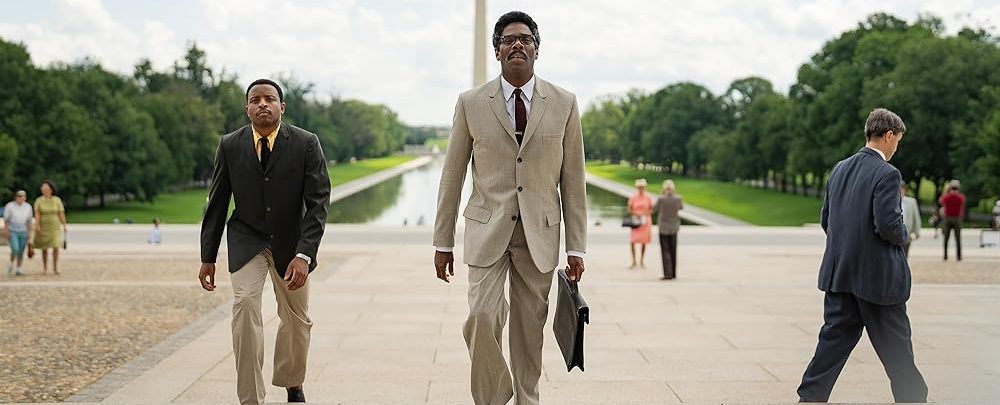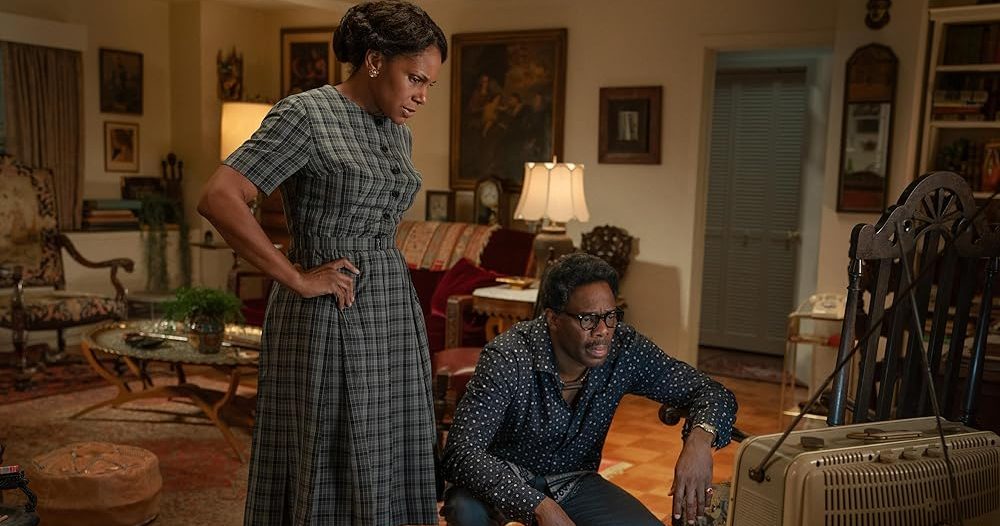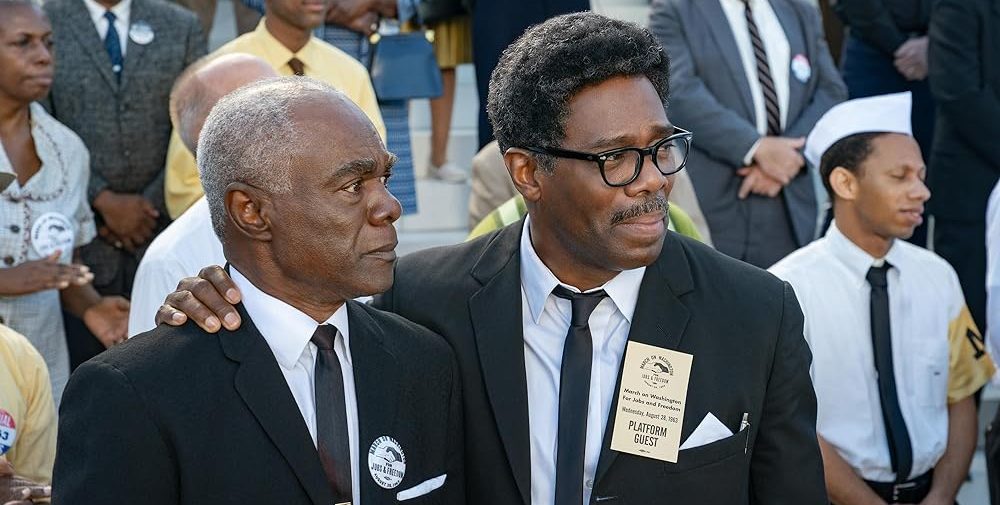Netflix’s ‘Rustin’ is all about the man behind the 1963 March on Washington for Jobs and Freedom, which many remember as the day Martin Luther King Jr. made his moving “I Have a Dream” speech. Directed by George C. Wolfe, the historical biopic film follows activist Bayard Rustin, who has a way of convincing people and a charm not everyone understands. He is a gay Black man living in America at a time when racial segregation is accepted, and homosexuality is a criminal offense. As this bothers him, he refuses to be a silent spectator when something is clearly wrong with society.
Colman Domingo holds his own as the titular character and is joined by Chris Rock and Aml Ameen in his efforts to tell Rustin’s story. While Rustin has always been an activist, the movie chooses to focus more on the time right before the famous March and Rustin’s attempts to contribute to the Civil Rights Movement substantially at a time when his sexuality, race and some past decisions are a major issue. It also explores his relationship with Martin Luther King Jr. during the movement and the role he played behind the scenes. This also makes us wonder how accurately the film has captured the true story of Rustin.
The Movie is Based on Bayard Rustin’s Fight Against Racism
‘Rustin’ is based on real events in the life of African-American civil rights leader and activist Bayard Rustin. Writers Julian Breece and Dustin Lance Black have paid careful attention to bringing Rustin to life through Domingo, who has apparently also managed to capture his mannerisms and way of speaking fluently. Despite the efforts, the film is intended for larger audiences and has taken just enough liberties to dramatize the events of Rustin’s life, that might not have been so impactful at the time he was alive. Moreover, former President and First Lady Barack Obama and Michele Obama are the executive producers of the film, giving it much more impact.

Rustin’s contributions to the movement and many such social causes at the time were mostly forgotten or erased from history, mainly due to his previous ties with the Communist Party and his acceptance of his sexuality in the mid-1900s. But it was also largely because despite being a leader and ensuring that a 250,000-strong crowd stood before them for the March on Washington in August 1963, Rustin preferred to stay away from the limelight. He did not want to let his past decisions, which he was proud of, stand in the way of anyone in authority cancelling the movement or holding his identity against him and his colleagues. This is why it was only in 2013, when then-president Obama awarded him the Presidential Medal of Freedom for his contributions, that his name was properly highlighted.
Rustin was born in March 1912 to absent parents but wealthy maternal grandparents Julia and Janifer Rustin, who raised him in West Chester, Pennsylvania. His biggest influence while growing up was his Quaker grandmother, who made him feel comfortable about his sexuality and introduced him to the concept of protesting against racial discrimination. Since then, aside from pursuing his education, he felt himself getting drawn towards activism. In all accounts of his story, Rustin was driven by his ideologies of equality for all human beings, which is why he refused to move to the back of the bus or follow similar discriminatory policies he was legally expected to follow as a Black man at that time.

He even briefly joined the Young Communist League in 1936 due to their stance on racial equality, a decision that came back to haunt him many times over in his later efforts. When they reversed their anti-war stance, Rustin left them, but that brief association became one of the major reasons his connection with important political movements had to be severed, aside from his sexuality. Rustin didn’t make any effort to hide that he was gay but didn’t promote it either, since the opposition always found a way to hold that against him.
For him, the Civil Rights Movement was in no way connected to his sexuality, and he wanted to keep making efforts to make a difference from a more general and wider race perspective. He went to jail on many occasions and ended up spending two years in prison during World War II, either for his relationships with other men or for refusing to be treated as an inferior due to his race. He still unapologetically served his sentence since his ideals mattered a lot more to him.
During his association with Martin Luther King Jr., he even advocated for non-violent peaceful protests, deeply inspired by the Gandhian principles. He went to India to learn more about their movement against British rule in 1948 and wanted to do the same in Africa. So, he took a trip to support West African independence movements as a member of the Fellowship of Reconciliation (FOR).

In the early 1940s, Rustin and A. Phillip Randolph attempted to conduct the first march to secure jobs for Black people, which was stopped by then-president Franklin Roosevelt because of all the negative publicity related to violence. Later, in 1960, Black leader Adam Clayton Powell Jr. threatened to expose a story suggesting a sexual relationship between Rustin and King. After that, Rustin was forced to step down amid these rumors. Even King didn’t want to be discredited on moral grounds despite both of them denying these allegations.
Nevertheless, Randolph brought him back in 1963 to serve as a major player in the March on Washington after the Birmingham police allegedly attacked children. Through his contacts, influence and the many such similar movements Rustin had organized before, even if they were not of this scale, he was their best option. He joined forces with King and Randolph again to organize the famous March. Hours before it, Rustin was still nervous, not knowing how many people would show up. It soon became an event that would go down in history as the reason the Civil Rights Act came into force in 1964. But Rustin only got to make a few statements after King and got his face on a magazine cover of Life Magazine on September 6, 1963, before his contributions were forgotten after his death in 1987.
Read More: Best Biopics on Netflix


You must be logged in to post a comment.